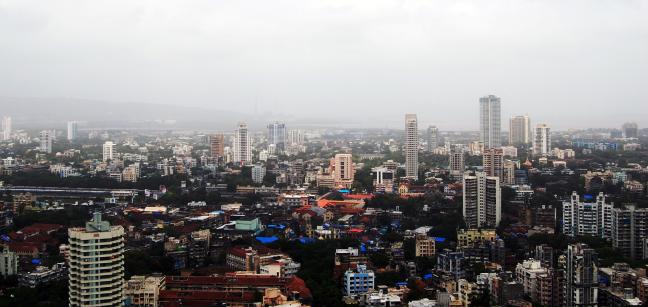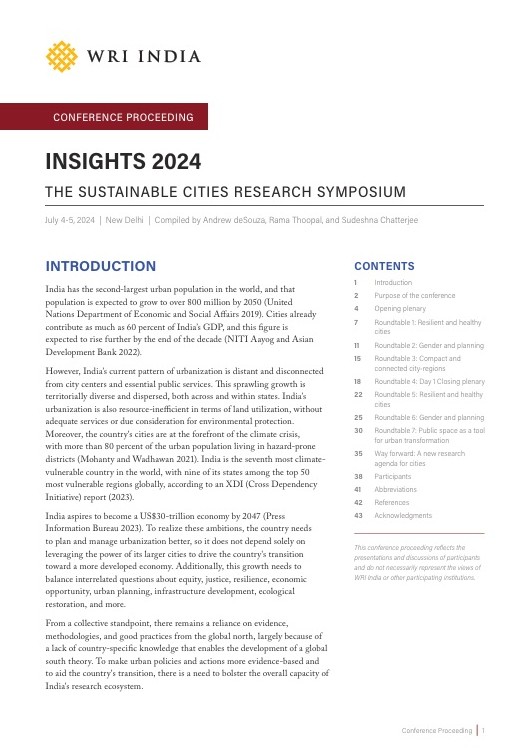Urbanising India: A Closer Look
by -
India will be one of the last major countries in the world to experience the urbanisation of its population. In 2010, 31 percent of India’s people lived in its cities. By 2030, this is expected to rise to 40 percent. This means that an additional 220 million people move to cities across the country.
Which cities will these people go to? Is it possible to create jobs for these people? Will they have a good quality of life?
An enormous challenge
Approximately 100 million people will go to or be born in the top 10 cities; and the next 100 million people will go to or be born in next 80 cities with populations of over one million . A McKinsey study quotes “If India optimises the productivity of its cities and maximizes their GDP, the economy could add more than 170 million urban workers to its labour force by 2025.”
Urbanisation will bring wealth and also challenge equity. The number of urban households with true discretionary spending power are estimated to increase sevenfold, to 89 million households, in 2025. Will this additional wealth mean a better quality of life? This wealth will surely increase the competition for constrained resources such as public finance, water, road space, and others.
The newly elected BJP government is committed to addressing these urban challenges. It announced the 100 Smart Cities programme when it came to power thereby setting the stage for one of the biggest urban renewal programmes. Just recently, a top government panel has approved Rs. 2.73 Lakh Crores (US$ 2,730 billion) to develop 100 smart cities and upgrade basic civic infrastructure in another 500 cities over the next ten years .
Cities and urbanisation clearly have the potential to be an environmentally sustainable way to work and live. Life in compact settlements requires less transport, less energy for cooling and heating, and directly occupies (and therefore, alters) less terrain than more spatially dispersed settlements.
What are Smart Cities?
There is no single, correct definition of Smart Cities. The idea behind creating them is to enhance human economic and social well-being, and to reduce costs and resource consumption. Collectively, the city has to work for all its citizens. A city has to be a place where its citizens can live, work, and thrive.
The discourse on Smart Cities includes a wide variety of topics, including governance, technology, citizen participation, transport, energy, health and pollution, water, and waste.
Land
Today India’s top 10 cities occupy 0.1% of the total land area, and its top 100 cities occupy 0.26% of the land. This land area will need to expand as more people come to live in cities, and it will be important to ensure expansion has certain efficiency. Land management will be a critical element of the smart cities programme.
Mobility
Indian cities in the last two decades have made large investments in building wider roads, flyover and elevated roads. This has only led to an increase in cars and associated negative results like air pollution and road traffic fatalities.
Global evidence shows new trends are emerging that are transforming the mobility paradigm from “moving cars” to “moving people”. Emerging global trends include bus rapid transit, unified cashless transactions across modes, taxi aggregators, bicycle sharing, car-license auction policies and others. Cities need to understand how to adopt the new paradigm, implement new trends, and ensure all initiatives are complimentary and not competing.
Finance (and measurement)
Governments, businesses, and investment funds are all beginning to understand the cost implications of climate change impacts such water scarcity, extreme weather events, temperature rise and want to invest in sustainable infrastructure.
Measuring environmental and social impact is critical to ensure that additional capital (in most cases) costs ensure reduction in environmental and social impact. Measurement methodologies will be key for cities to raise capital from private sector, launching fiscal instruments like bonds or accessing funds from the green climate fund.
Public Spaces
Public spaces are where everybody in the city can meet as equals. Cities need safe, clean public spaces. Streets are the largest public space in city and fostering vibrant streets can prioritize human interaction and create great public places where people can rest, relax and play.
Streets where one can walk or bicycle freely created sustainable and healthy lifestyles for everyone regardless of age, gender, ability, ethnicity or economic background. The Raahgiri Day open streets movement is a great start in this direction.
Technology for Disruptive Change
Efficiency through technology is clearly useful. And many truly transformative services can be “disruptive”, and create entirely new value propositions that may turn our ideas of ownership, participation, measures and experience on their head. So why not go back to starting with a problem that is pressing and needs new technologies and disruptive ideas for solutions?
A Smart City may not have single definition but it will require a willingness to sacrifice old ways and single-minded pursuits. Decisions will need to be built on strategic and evidence-based foundations, transforming cites to become places we would all like to come home to.


